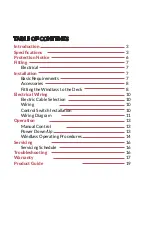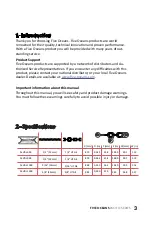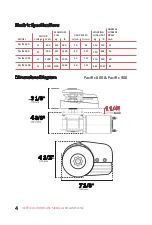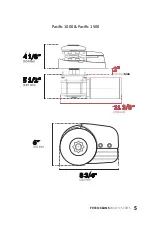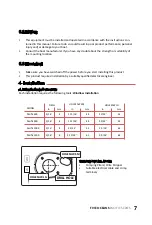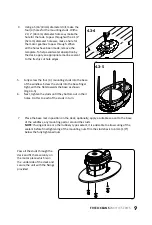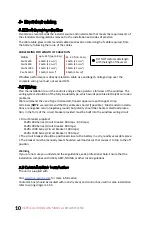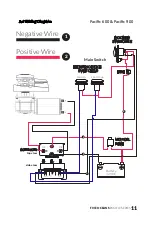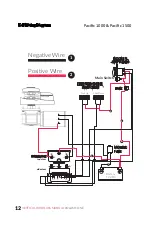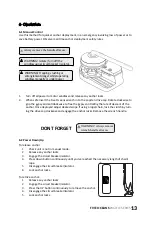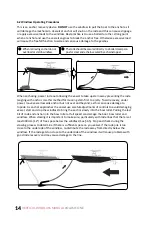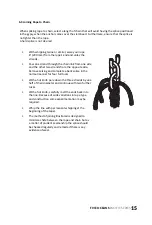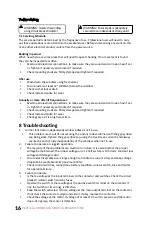
16
VERTICAL WINDLASS MANUAL
VOLUME ONE
8 Troubleshooting
1. Anchor falls down independently while windlass is not in use.
•
This problem is a result of not securing the anchor rode combined with the gypsy drive
cap being slack. Tighten the gypsy drive cap using the Five Oceans wrench and always
secure the anchor rode independently of the windlass when not in use.
2. Failure to operate or sluggish operation.
•
The majority of these problems are electrical in nature. It is essential that the proper
voltage be maintained. The proper voltage on a 12 Volt system is 13.5 Volts, constant low
voltage will damage motor.
•
Ensure electrical cable size is large enough to handle the current draw and keep voltage
drop within acceptable limits (maximum 10%).
•
Check control switches, connections, battery condition, isolator switch, fuse and motor
for operation failure.
3. Failure to operate.
•
Is there a voltage at the input terminals to the contactor and switches. Check the circuit
breaker/ isolator switch and any fuses.
•
Operate the switch. Is there voltage at the positive switch terminal on the solenoid. If
not, the switch (or its wiring), is difective.
•
Keep the switch activated. Is there voltage at the main output terminal on the contactor.
If not check the contactor coil ground circuit. If okay, replace the contactor.
•
Check the voltage at the motor. If voltage of at least 12.5 volts is present and the motor
does not operate, the motor is defective.
7.1 Servicing Schedule
The service period is determined by the frequency of use. Professional user will need to carry
out these operations more often than the weekend user. Before commencing any work on this
or any other electrical product, isolate from the power source.
Bedding in period:
When new there are some areas that will need frequent checking. If no movement is found
they can be inspected less often.
•
Examine all electrical connections, to make sure they are sound and corrosion hasn’t set
in. Tighten if necessary and protect if required.
•
Check mounting studs are firmly clamped and tighten if required.
After use:
•
Wash down the windlass using fresh water.
•
Ensure rode is at least 12” (300mm) below the windlass
•
Check anchor locker drain
•
Check rode and splice for wear.
Annually or more often if frequent user:
•
Examine all electrical connections, to make sure they are sound and corrosion hasn’t set
in. Tighten if necessary and protect if required.
•
Check mounting studs are firmly clamped and tighten if required.
•
Check rode and splice for wear.
•
Check gypsy as it is a high wear item
7- Servicing
WARNING! Isolate the windlass
using circuit breaker/isolator
WARNING! Ensure rode is adequately
secured to an independent strong point

